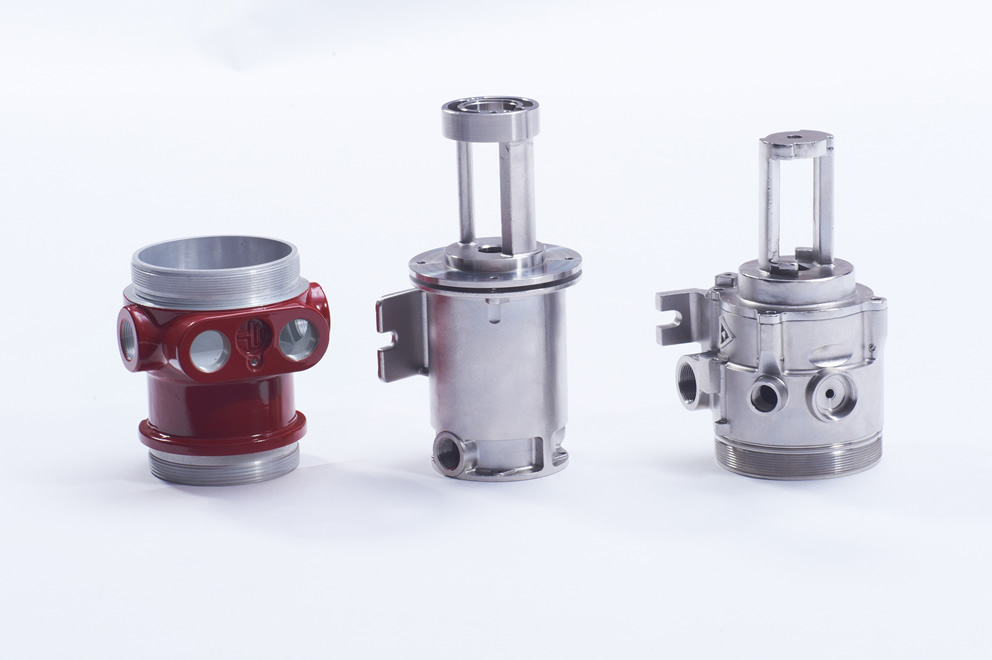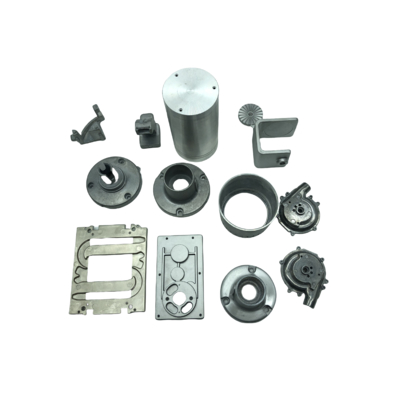Exploring the Ingenious Processes Behind Modern Light Weight Aluminum Foundry Workflow
Modern light weight aluminum foundry procedures are undertaking substantial transformation. Automation and AI are reshaping production methods, improving both effectiveness and precision. The assimilation of 3D printing is streamlining mold and mildew development, while sustainability practices are becoming more necessary. Each of these innovations plays an essential duty in redefining the market. The ramifications of these modifications expand beyond plain manufacturing effectiveness. What opportunities and obstacles lie ahead for aluminum foundries in this advancing landscape?
The Role of Automation in Aluminum Foundries

Moreover, automation adds to improved safety standards within the shop setting. By transferring unsafe jobs to devices, human employees can concentrate on managerial roles and quality assurance, minimizing the risk of accidents. Furthermore, data analytics stemmed from automated processes supply beneficial understandings into operational efficiency, causing better decision-making and continuous renovation. As the demand for aluminum products grows, the fostering of automation modern technologies will likely increase, additionally changing the landscape of light weight aluminum foundry procedures.
Innovations in Casting Technologies
Recent improvements in casting technologies are transforming aluminum foundry operations. Technologies such as 3D printing assimilation, advanced alloy formulations, and automated procedure optimization are boosting efficiency and item top quality. These growths are essential in fulfilling the evolving demands of the sector.
3D Printing Assimilation
Integrating 3D printing technology into light weight aluminum foundry operations has transformed conventional spreading techniques, boosting both effectiveness and precision. This innovative method permits the fast manufacturing of complicated mold and mildews and cores, considerably reducing preparations and product waste. By utilizing additive production, factories can create elaborate geometries that were difficult or previously tough to accomplish with traditional methods. The flexibility of 3D printing likewise makes it possible for quick design alterations, fostering a more nimble manufacturing procedure. In addition, this assimilation sustains the usage of lightweight structures, which is significantly crucial in industries such as automobile and aerospace. As aluminum foundries remain to embrace 3D printing, they position themselves at the forefront of technical development, driving enhancements in product top quality and operational capacities.
Advanced Alloy Formulations
The advancement of innovative alloy formulas has significantly boosted spreading innovations in aluminum shop procedures. These solutions incorporate different aspects, such as copper, magnesium, and silicon, to improve mechanical properties and thermal resistance. By customizing the composition of light weight aluminum alloys, makers can attain specific efficiency qualities that satisfy the demands of varied applications, from automobile components to aerospace frameworks. Making use of innovative alloys likewise adds to reduced weight and boosted stamina, which are vital variables in modern-day engineering. In addition, advancements in alloy growth make it possible for much better fluidness throughout spreading, leading to enhanced surface finishes and reduced flaws. Generally, advanced alloy solutions stand for a substantial jump ahead, positioning aluminum shops to fulfill the progressing needs of various markets effectively.
Automated Refine Optimization
Innovations in casting technologies have led the way for automated procedure improvement in light weight aluminum factory operations. By integrating advanced software and real-time data analytics, factories can currently simplify manufacturing procedures and boost quality assurance. Automated systems keep an eye on variables such as stress, cooling, and temperature level prices, allowing for prompt changes that minimize defects and waste. Furthermore, equipment learning algorithms analyze historic performance data to anticipate excellent settings, thus boosting effectiveness and reducing cycle times. Robotics additionally play a significant duty, taking care of recurring tasks that improve safety and accuracy. On the whole, these developments not only drive functional effectiveness yet additionally allow foundries to fulfill the expanding need for top quality light weight aluminum elements in numerous sectors.
Smart Manufacturing and Sector 4.0 Assimilation
The integration of Smart Production and Industry 4.0 within light weight aluminum shops is transforming functional efficiency. By leveraging IoT innovations, automation, and robotics, shops can enhance production procedures and minimize downtime. Furthermore, information analytics supplies vital insights that boost decision-making and drive continual renovation.
IoT in Factory Workflow
As makers progressively welcome the Web of Things (IoT), factory operations are experiencing a transformative change towards clever production and Market 4.0 combination. aluminum casting. IoT innovations make it possible for real-time information collection and evaluation, improving decision-making procedures and functional efficiency. Sensing units and linked devices monitor equipment efficiency, product usage, and environmental problems, enabling aggressive maintenance and source optimization. This connectivity cultivates a much more agile production setting, where modifications can be made swiftly in action to market needs. Additionally, IoT promotes boosted traceability and quality control, as data from the entire manufacturing cycle can be conveniently accessed this link and assessed. Generally, the integration of IoT in shop procedures significantly enhances performance and drives development in aluminum manufacturing processes
Automation and Robotics Combination
Automation and robotics assimilation is transforming light weight aluminum foundry operations by boosting performance and precision. This transformative method streamlines procedures such as molding, putting, and ending up, lowering human error and increasing result consistency. By using advanced robot systems, factories can attain higher production rates while preserving rigorous top quality requirements. Automated systems also allow real-time tracking and flexible control, enabling for speedy changes to manufacturing criteria. Additionally, the integration of robotics lessens labor costs and reduces safety and security risks related to manual handling of liquified metal. As factories welcome wise manufacturing concepts fundamental in Industry 4.0, the synergy between automation and robotics solidifies their one-upmanship, paving the way for lasting development and advancement in the light weight aluminum spreading field.
Data Analytics for Performance
Harnessing data analytics greatly enhances effectiveness within aluminum foundry operations, lining up with wise manufacturing and Market 4.0 concepts. By leveraging real-time data collection and evaluation, shops can keep track of production procedures, anticipate devices failings, and enhance source allotment. This data-driven method facilitates insightful decision-making, enabling supervisors to determine traffic jams and enhance operations. Furthermore, anticipating analytics empowers shops to expect market needs, therefore decreasing waste and ensuring timely item delivery. Combination of data analytics with IoT gadgets boosts functional exposure, fostering an aggressive upkeep society. Ultimately, applying these innovative logical methods not only improves productivity but also drives technology, placing aluminum shops to satisfy the advancing demands of the market while preserving one-upmanships in a quickly altering landscape.
Lasting Practices in Aluminum Casting
While the aluminum spreading market has actually traditionally faced environmental obstacles, numerous factories are now embracing lasting techniques to minimize their effect (Aluminum Casting Company). A considerable focus has been on recycling aluminum scrap, which not only minimizes waste however likewise conserves power contrasted to key light weight aluminum manufacturing. Ingenious melting modern technologies, such as induction heating systems, enhance power performance and lower greenhouse gas emissions
Furthermore, foundries are carrying out closed-loop water systems to reduce water usage and lower thermal contamination. Making use of environmentally friendly binders in mold-making procedures is getting traction, further decreasing dangerous exhausts.
Moreover, some facilities are buying renewable resource resources to power operations, lining up with worldwide sustainability objectives. By integrating these techniques, the aluminum spreading industry is progressing toward an extra ecologically responsible future, showing that financial growth can exist together with eco-friendly stewardship - Aluminum Foundry. These initiatives reflect a commitment to sustainability and the importance of environmental responsibility in manufacturing
Quality Control Innovations
As the light weight aluminum casting sector developments in the direction of sustainability, the relevance of quality control advancements comes go now to be progressively apparent. Modern aluminum foundries are embracing sophisticated innovations to boost their quality control procedures. Strategies such as real-time surveillance and data analytics allow makers to discover problems and inconsistencies early in the production cycle. Carrying out automated examination systems equipped with device discovering formulas warranties that products meet strict quality criteria while minimizing human mistake.
Additionally, the Find Out More combination of non-destructive testing techniques, such as radiographic and ultrasonic examinations, gives much deeper understandings right into the honesty of spreadings without harming the product. These innovations not only boost product integrity but also minimize waste, lining up with sustainability objectives. On top of that, the adoption of standardized quality structures assists improve procedures across various factories, guaranteeing consistency in result. Jointly, these developments are improving quality assurance, cultivating a society of excellence within the aluminum spreading field.
Future Patterns in Aluminum Shop Operations
What innovations lie in advance for light weight aluminum factory operations? The future of aluminum factories is poised for change with advancements in automation, fabricated knowledge, and sustainable methods. The assimilation of robotics and automated systems is expected to boost effectiveness and precision in the spreading processes, minimizing human error and labor prices. Furthermore, AI-driven analytics will certainly enable real-time tracking and predictive upkeep, optimizing functional performance and lessening downtime.
Sustainability remains a centerpiece, with shops progressively adopting environmentally friendly practices, such as using recycled light weight aluminum and developing low-emission melting innovations. Developments in 3D printing are also prepared for to reinvent mold-making, permitting complex geometries and minimized product waste. As the market accepts digitalization, data-driven decision-making will certainly become crucial, allowing factories to respond promptly to market needs. Jointly, these trends assure to redefine light weight aluminum shop procedures, making them extra efficient, lasting, and adaptable to future obstacles.

Regularly Asked Questions
What Precaution Are Applied in Light Weight Aluminum Foundry Workflow?
Light weight aluminum factory operations implement different safety and security measures, including individual protective equipment, air flow systems to manage fumes, routine security training, emergency action plans, and rigorous monitoring of temperature level and tools to avoid accidents and guarantee worker safety and security.
How Do Factories Take Care Of Workforce Educating for New Technologies?

What Materials Are Generally Recycled in Aluminum Foundries?
Light weight aluminum factories frequently recycle scrap light weight aluminum, including post-consumer items like drink containers, vehicle components, and construction products. This reusing process decreases waste and conserves resources, adding to a much more sustainable light weight aluminum manufacturing market.
How Does Aluminum Casting Impact the Environment?
Aluminum casting influences the atmosphere through energy-intensive procedures, greenhouse gas exhausts, and possible neighborhood pollution. However, improvements in recycling and sustainable practices can minimize these effects, advertising a more environmentally friendly method to light weight aluminum production.
What Are the Regular Lead Times for Aluminum Casting Projects?
Normal preparation for light weight aluminum casting jobs vary significantly, normally varying from 2 to 6 weeks. Elements influencing these timelines include complexity, order size, and material accessibility, influencing general production routines in shop operations.
Automation significantly plays a crucial function in light weight aluminum foundries, enhancing effectiveness and precision in the manufacturing process. Improvements in casting technologies have actually led the method for automatic process enhancement in light weight aluminum foundry operations. Taking advantage of information analytics considerably improves efficiency within aluminum foundry procedures, aligning with wise production and Industry 4.0 principles. A substantial emphasis has actually been on reusing aluminum scrap, which not only minimizes waste but likewise conserves energy compared to main aluminum production. Light weight aluminum shops typically reuse scrap aluminum, including post-consumer items like drink containers, auto parts, and building and construction materials.